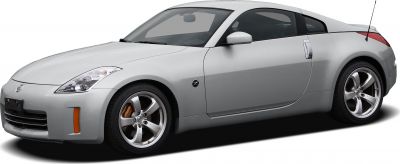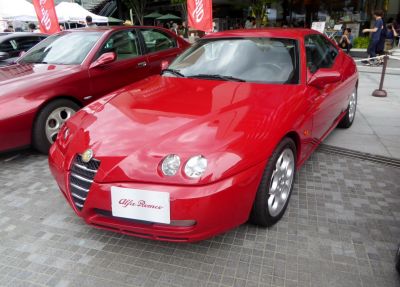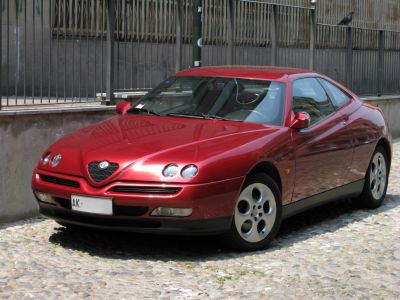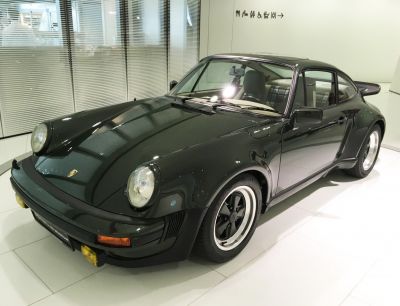 1987 RUF CTR Dimensions, Size & Specs
1987 RUF CTR Dimensions, Size & SpecsMeasurements of the 1987 RUF CTR, engineered for optimal performance and comfort
| Dimensions | |
|---|---|
| Length: | 4290 mm168.9 in14.1 ft |
| Width: | 1775 mm69.9 in5.8 ft |
| Height: | 1311 mm51.6 in4.3 ft |
| Weight Specifications | |
| Curb Weight: | 1170 kg2579 lbs |
| Tire Specifications | |
| Rims Sizes: | 17-inch rims:
|
| Tire Sizes: |
|
The RUF CTR, produced between 1987 and 1991, is a high-performance coupe revered in the sports car world for its aggressive design and outstanding engineering. Measuring 4290 mm (approximately 169 inches) in length, 1775 mm (about 70 inches) in width, and 1311 mm (around 51.6 inches) in height, the CTR offers a compact footprint typical of late 1980s supercars. Weighing in at just 1170 kg (2580 lbs), this lightweight vehicle prioritizes agility and speed. The car rides on 17-inch wheels, with rims sized 8.0J x 17 at the front and 10J x 17 at the rear, paired with tires measuring 215/45 R17 at the front and 255/40 R17 at the rear, balancing grip and handling performance. As a coupe, the RUF CTR blends sleek aerodynamics with functional design elements to maximize downforce and stability at high speeds. Its size and weight characteristics reflect a focus on precision driving and performance, making it a distinct and highly desirable model within RUF's limited production history.
Discover the standout features that make the 1987 RUF CTR a leader in its class
Have a question? Please check our knowledgebase first.
The RUF CTR from 1987 to 1991 measures 4290 mm (168.9 inches) in length, 1775 mm (69.9 inches) in width, and 1311 mm (51.6 inches) in height. These compact yet sporty dimensions reflect its design as a high-performance coupe, optimized for aerodynamic efficiency and agility. The dimensions help position it firmly within the sports car category of its era, balancing size with speed and handling capabilities.
The RUF CTR weighs 1170 kg (2580 lbs) curb weight, which is relatively light for a supercar. This lighter weight contributes significantly to its excellent acceleration, agility, and overall driving dynamics. The reduced mass improves handling response, braking performance, and fuel efficiency, making the car feel nimble and highly responsive even at high speeds.
The RUF CTR is equipped with 17-inch rims, specifically 8.0J x 17 in the front and 10J x 17 in the rear. It uses 215/45 R17 tires on the front and wider 255/40 R17 tires at the rear. This staggered setup enhances grip, stability, and cornering performance, allowing the rear tires to handle more power while the front tires ensure precise steering feedback, essential for a high-performance vehicle like the CTR.
With a height of 1311 mm (51.6 inches), the RUF CTR has a low profile characteristic of sports coupes, which aids aerodynamic efficiency by reducing airflow resistance. This low height gives the car a sleek and aggressive stance but might limit headroom for taller individuals, potentially impacting driver comfort. However, the design prioritizes performance and speed, making aerodynamics a key factor.
The RUF CTR's dimensions of 4290 mm length and 1775 mm width mean it comfortably fits within the average residential garage space, which typically measures around 2440 mm (8 feet) in width and 4877 mm (16 feet) in length. However, owners should consider mirror clearance – the width with mirrors might be slightly wider – and any modifications or parking aids to ensure ease of entry and exit. Its low height is generally advantageous for garage storage.
The 1987 RUF CTR was based on the Porsche 911 platform but modified extensively. Compared to its Porsche 911 predecessors, the CTR is similar in length and width but benefits from unique enhancements such as widened rear wheel arches for wider tires, contributing to improved traction and stability. Compared to contemporaneous supercars, the CTR's compact dimensions and relatively light weight gave it an edge in agility, making it notably nimble even against larger and more powerful rivals.
Relative to other sports cars of the late ’80s, the RUF CTR sits at the smaller and lighter end of the spectrum, favoring agility over sheer size. For example, cars like the Ferrari Testarossa were longer and wider, but heavier. The CTR's more compact footprint with a length of 4290 mm (168.9 in) and curb weight of 1170 kg (2580 lbs) allowed for sharper handling and higher responsiveness, qualities highly prized on demanding road and track conditions.
The RUF CTR’s compact exterior dimensions translate to a snug interior space typical of high-performance two-seat coupes. The low height (1311 mm) and narrow width (1775 mm) mean cabin space focuses on the driver and passenger with limited rear or additional storage room. The interior prioritizes lightweight materials and driver-focused ergonomics, making it comfortable for short, spirited drives rather than long-distance cruising.
Produced between 1987 and 1991, the RUF CTR is renowned for being one of the fastest cars of its time, earning the nickname 'Yellow Bird.' It is unique because RUF is a manufacturer that enhances Porsche chassis with proprietary engineering. Its design married extreme performance with relatively compact dimensions. Limited production numbers make it a rare and highly sought-after vehicle among collectors and enthusiasts.
The RUF CTR’s tight dimensions and light curb weight significantly contribute to its legendary handling prowess. The wide rear track, enabled by the car’s width and tire setup, offers superior traction, essential for handling the high power output. The car's low height reduces its center of gravity, improving cornering stability. However, the compact interior and tight packaging demand driver skill to fully exploit the car’s dynamic potential, rewarding precise driving input and quick reflexes.
Discover similar sized cars.

| Production: | 2003-2007 |
|---|---|
| Model Year: | 2003 |
| Length: | 4310 mm169.7 in |
| Width: | 1816 mm71.5 in |
| Height: | 1316 mm51.8 in |

| Production: | 2003-2004 |
|---|---|
| Model Year: | 2003 |
| Length: | 4299 mm169.3 in |
| Width: | 1776 mm69.9 in |
| Height: | 1318 mm51.9 in |

| Production: | 1995-2003 |
|---|---|
| Model Year: | 1995 |
| Length: | 4285 mm168.7 in |
| Width: | 1780 mm70.1 in |
| Height: | 1320 mm52.0 in |

| Production: | 1975-1989 |
|---|---|
| Model Year: | 1974 |
| Length: | 4291 mm168.9 in |
| Width: | 1775 mm69.9 in |
| Height: | 1280-1320 mm50.4-52.0 in |
